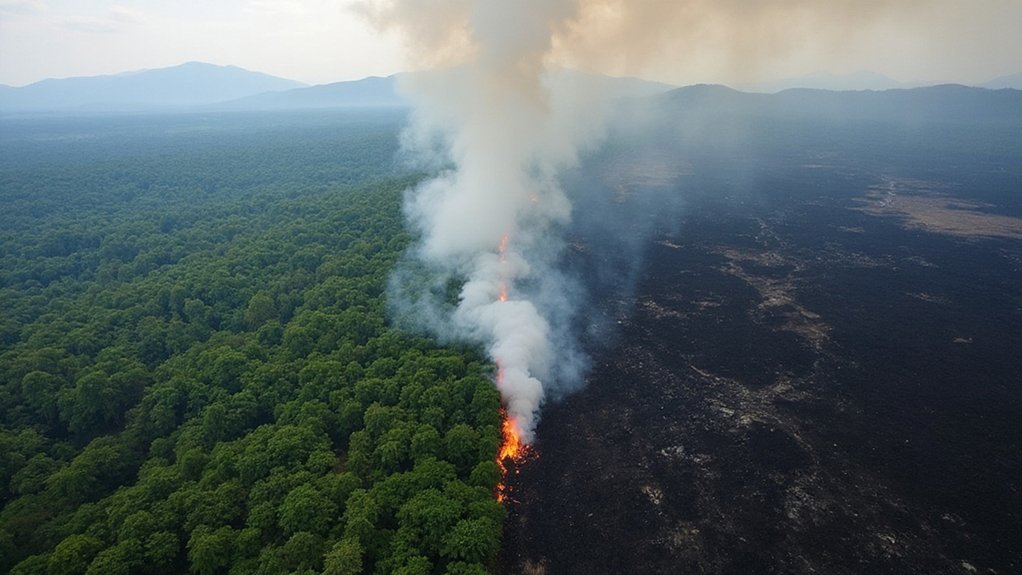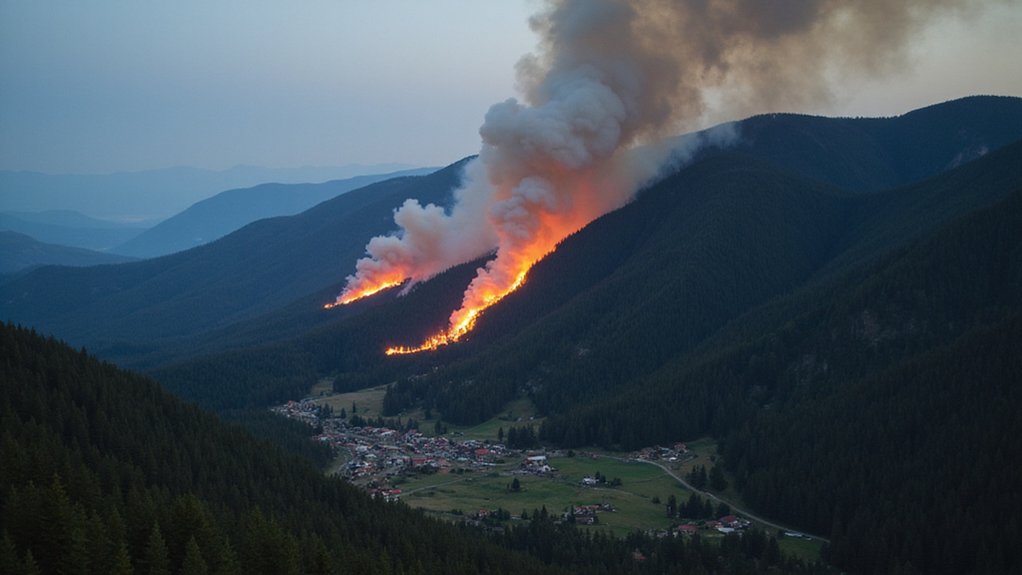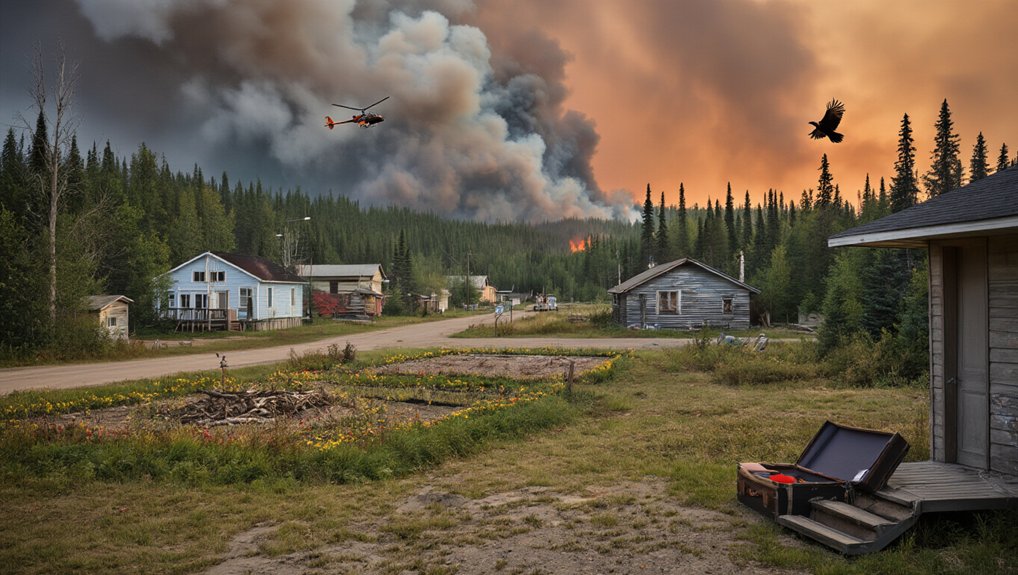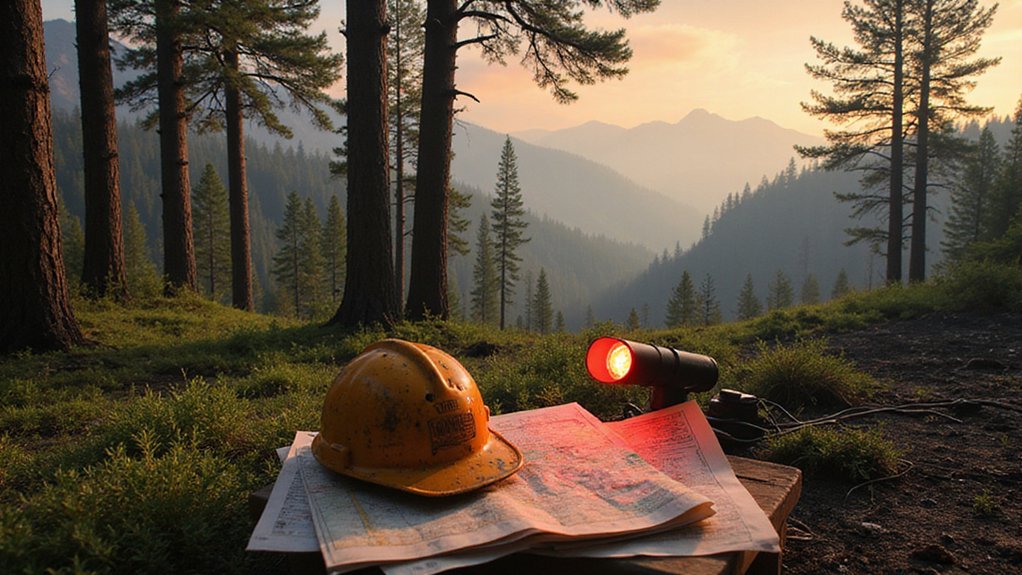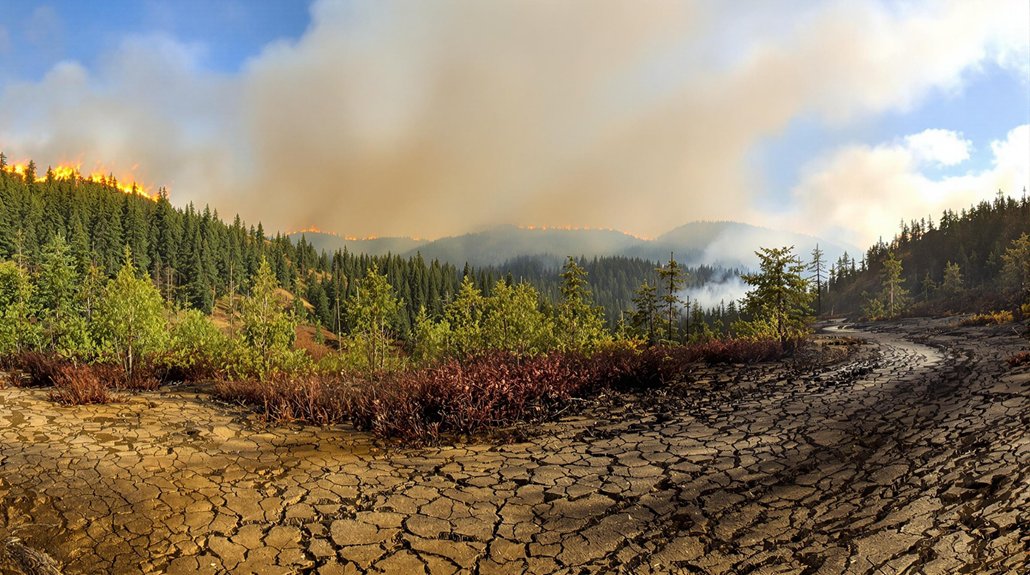Flames are devouring the world’s tropical forests at an alarming rate, with global forest loss reaching a record high in 2024. A staggering 30 million hectares of forests vanished worldwide, nearly double the losses seen in 2023. The destruction of primary tropical forests alone claimed 6.7 million hectares, an area roughly the size of Panama, disappearing at a rate of 18 soccer fields every minute.
Our forests are vanishing at unprecedented speed—30 million hectares gone in 2024, with primary forests disappearing every minute.
For the first time in over two decades of tracking, fires became the leading cause of tropical forest destruction. The connection to climate change is clear, as 2024 marked the hottest year on record. These extreme temperatures, combined with El Niño conditions, created the perfect environment for runaway wildfires that proved nearly impossible to control. Nearly half of all primary tropical forest loss was directly attributed to these devastating fires.
The devastating blazes released 4.1 billion tons of CO2 into the atmosphere, more than four times the emissions from all air travel in 2023. This creates a dangerous feedback loop: climate change fuels fires, which release more carbon, further worsening climate change. Earth’s temperature has now exceeded 1.5°C above pre-industrial levels for the first time on an annual basis.
Brazil and Bolivia suffered the largest tropical forest losses, while the Democratic Republic of Congo recorded its highest forest loss ever. Canada and Russia also endured extreme fire seasons that contributed notably to the global crisis. Southeast Asia offered a rare bright spot, with Indonesia and Malaysia reducing forest loss by 11% and 13% respectively.
Many fires begin as controlled burns for agriculture but spread uncontrollably in dry conditions. Military conflicts, especially in the Congo Basin, have worsened forest loss as people fight over natural resources. Mining and plantation expansion also threaten remaining forests.
The destruction undermines pledges made at COP26 in 2021, where more than 140 nations committed to halt forest loss by the end of the decade. Of the 20 countries with the largest primary forests, 17 experienced higher losses in 2024 than when they signed the agreement.
Experts warn that countries are falling “woefully short” on their commitments, requiring a 20% reduction in deforestation each year to meet the 2030 goal.
References
- https://www.insurancejournal.com/news/international/2025/05/21/824618.htm
- https://www.axios.com/2025/05/21/global-forest-loss-record-co2
- https://www.climatechangenews.com/2025/05/21/global-forest-loss-hits-frightening-record-high-with-climate-fuelled-fires/
- https://www.ncei.noaa.gov/access/monitoring/monthly-report/fire/202501
